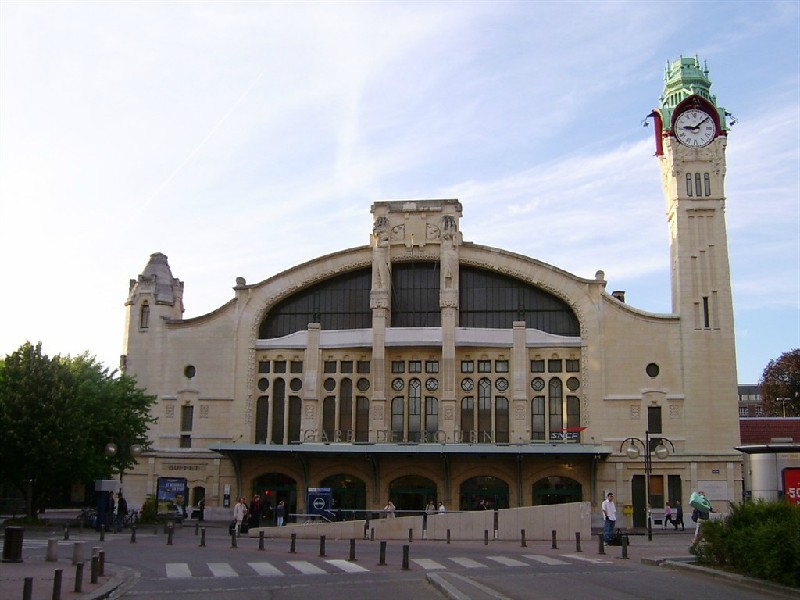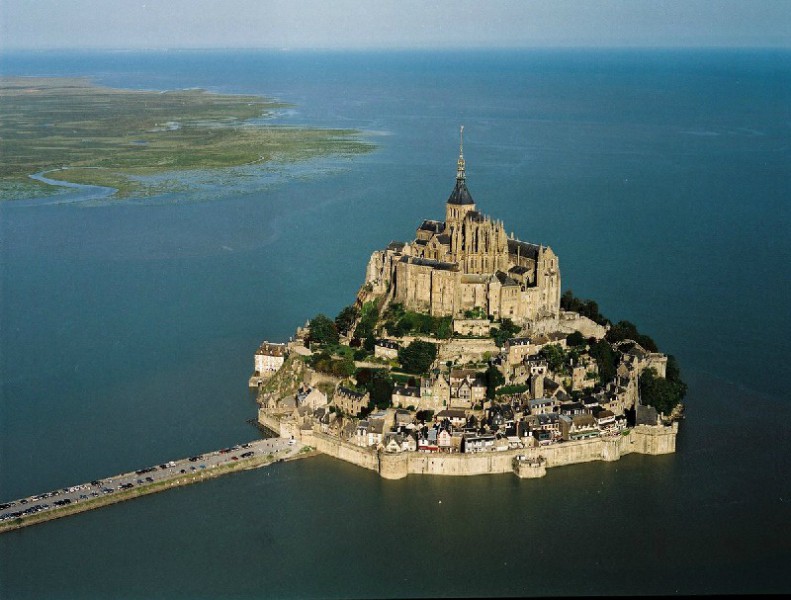Information about Rouen in France
Rating: 7,5/10 (378 votes)  TourismRouen is recognized as one of the brightest cities in the French province, here almost every side of life has its own easily recognizable style. For example, many French people come to Rouen for the weekend to visit one of its antique markets - local sellers among a heap of not very useful items can sell truly valuable copies. The city is also famous for its ceramics - works of the best workshops can be bought in every store in the city. Gourmets from all over the world strive to visit Rouen at least once, local recipes have long been known in world restaurants of French cuisine. Roasted duck, chocolate, sweet tarts and apple wine are just a short list of menus that are strongly associated with Rouen. The policy of local restaurants and cafes is to demonstrate the cooking process as openly as possible. As for the sights, most of them are concentrated in the historical center of the city. Among the most significant architectural and historical monuments, there are many perfectly preserved examples of the medieval style, as well as a number of other eras.  AttractionsThe central building of the city is the Cathedral of Rouen. This majestic building began to be created in the XII century, when the dominant direction in architecture was the transition from the Romanesque style to the Gothic. Most of the cathedral was rebuilt only in the 16th century. The cathedral is interesting not only for its unusual appearance, but also for its interior decoration - it is a true work of art. The underground premises of the cathedral are the tomb of the most important people of Normandy. Another masterpiece of Gothic architecture in Rouen is the Church of St. Ouen. Just like the main cathedral of the city, this shrine was built for several centuries, gradually changing its architectural style, but the general features of the Gothic were preserved. The history of the facade of the church is interesting - initially medieval drawings contained many decorations in the form of sculptures and stucco moldings, but in the 19th century it was decided to completely remove them so that the temple did not look too much like Notre Dame de Paris. One of the sights related to the Middle Ages, it is already associated with a specific historical person - Jeanne d'Arc Tower is the only castle of the 13th century that has survived to this day, which was once one of the central parts of Rouen. The tower was named in honor of her most famous prisoner; it was here that Jeanne served the last days of her life. For tourists, the chamber has been preserved in its original form; a number of upper rooms are now devoted to an exhibition detailing the events that preceded the imprisonment of Joan of Arc. Another place in the city is associated with the name of this heroic woman - Old Market Square. The historical square is known from textbooks as the place of execution of Joan of Arc - until now, two narrow stone slabs laid in a criss-cross pattern mark the place where the fire was erected, which killed the future national heroine of France. Also, from the symbols on this place, you can see a long row of white stones of an ideal shape - here the place where the judges were sitting is marked. After a serious bombing during the Second World War, the square was partially damaged, but after its restoration a Memorial Complex was erected here - Cathedral of Saint Jeanne. A modern-looking small church connects with the historical site of the square - the market, which is now under the roof, which allows you to trade here in any weather. By the way, the design of the cathedral was designed in such a way that the roof resembled the fire of the Inquisition, as a symbol of Jeanne's suffering. The most significant of the museums in Rouen is the Museum of Art. The museum is located in an austere-looking building of the early XX century, but, despite this, it can rightfully be considered one of the most unusual museums in France. Its unusualness is not in size, the exhibition itself is small, but in the arrangement of exhibits. The museum also has an exhibition in the courtyard. The canvases and sculptures are arranged in transparent and durable display cases. In addition, chairs and tables are placed in the courtyard, and lectures on the history of painting are often held here. Closer to the outskirts of Rouen, you can see a small modest 17th century mansion, where the Museum of Ceramics is located. Rouen's ceramics have been one of the city's trademarks for several centuries. Some of the local workshops delivered dishes directly to the royal table, which is displayed in the museum's exposition. Rouen's pottery masters excelled not only in tableware. Some of them turned out to be quite good sculptors; a separate hall of the museum is dedicated to these works. Le Sec de Tournelle is the most unusual of the museums in Rouen. Its location is unusual - there is an exhibition hall in the Gothic Church of Saint Laurent, restored at the beginning of the 20th century, which is a landmark in itself. The museum's exposition is dedicated to the blacksmithing of Rouen, it glorified the city not as much as the manufacture of ceramics, but Rouen nevertheless made a certain contribution to the art of metal working. The final description of the uniqueness of the museum will be the policy of its management - admission is free for everyone under 26 years old, so before visiting you must present your passport.  We also recommend reading Information about Lyon France Topic: Information about Rouen in France. |




